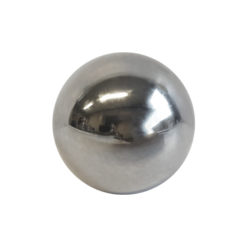Hardened steel grinding balls
2-3 delivery days if product is in stock
Description
The high quality LAARMANN Hardened steel grinding balls are usable for Planetary Ball Mills
Hardened steel
The term hardened steel is often used for a medium or high carbon steel that has been given heat treatment and then quenching followed by tempering. The quenching results in the formation of metastable martensite, the fraction of which is reduced to the desired amount during tempering. This is the most common state for finished articles such as tools and machine parts. In contrast, the same steel composition in annealed state is softer, as required for forming and machining.
Depending on the temperature and composition of the steel, it can be hardened or softened. To make steel harder, it must be heated to very high temperatures. The final result of exactly how hard the steel becomes depends on the amount of carbon present in the metal. Only steel that is high in carbon can be hardened and tempered. If a metal does not contain the necessary quantity of carbon, then its crystalline structure cannot be broken, and therefore the physical makeup of the steel cannot be altered.
Frequently, the term “hardening” is associated with tempered steel. Both processes are used hand in hand when hardening steel. The two part process begins with hardening the steel so that it becomes hard and does not wear over time. However, very often, this process leaves the steel very brittle and susceptible to breaking during use. Tempering reduces the hardness of the forged steel very slightly but improves the overall product as it results in steel that is much less brittle.
From Wikipedia, the free encyclopedia
Reviews (0)
Only logged in customers who have purchased this product may leave a review.
You may also like…
Grinding media
Grinding media
Grinding media
Grinding media
Machines
Grinding media
Grinding media
Grinding media
Grinding media
Grinding media





































Reviews
There are no reviews yet.